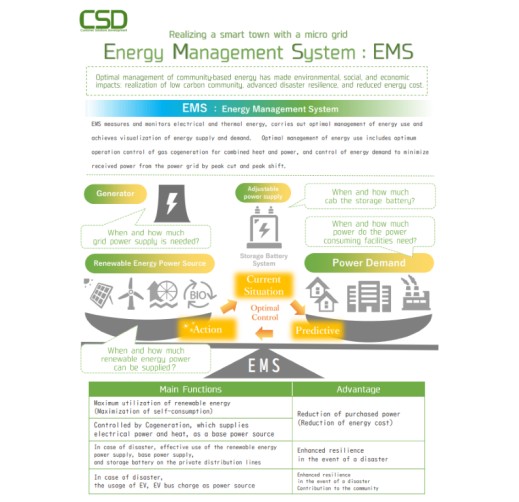Energy Management System:EMS
Technology / Service Summary
Optimal management of community-based energy has made environmental, social, and economic impacts: realization of low carbon community, advanced disaster resilience, and reduced energy cost.
Purpose
EMS measures and monitors electrical and thermal energy, carries out optimal management of energy use and achieves visualization of energy supply and demand. Optimal management of energy use includes optimum operation control of gas cogeneration for combined heat and power, and control of energy demand to minimize received power from the power grid by peak cut and peak shift.
Feature
✔Maximum utilization of renewable energy (Maximization of self-consumption)
✔Controlled by Cogeneration, which supplies electrical power and heat, as a base power source
✔In case of disaster, effective use of the renewable energy power supply, base power supply, and storage battery on the private distribution lines
✔In case of disaster, the usage of EV, EV bus charge as power source
Effect
Controlled Substance
Applicable Regions / Countries
- Japan
- Southeast Asia
- Central/South Asia
- China/ East Asia
- Middle East
- Africa
- Oceania
- Europe
- Central/South America
- ASEAN countries
Indonesia,Cambodia,Singapore,Thailand,Philippines,Brunei Darussalam,Viet Nam,Malaysia,Myanmar,Lao PDR
Related SDGs Goals
- 7. Affordable and Clean Energy
- 13. Climate Action



